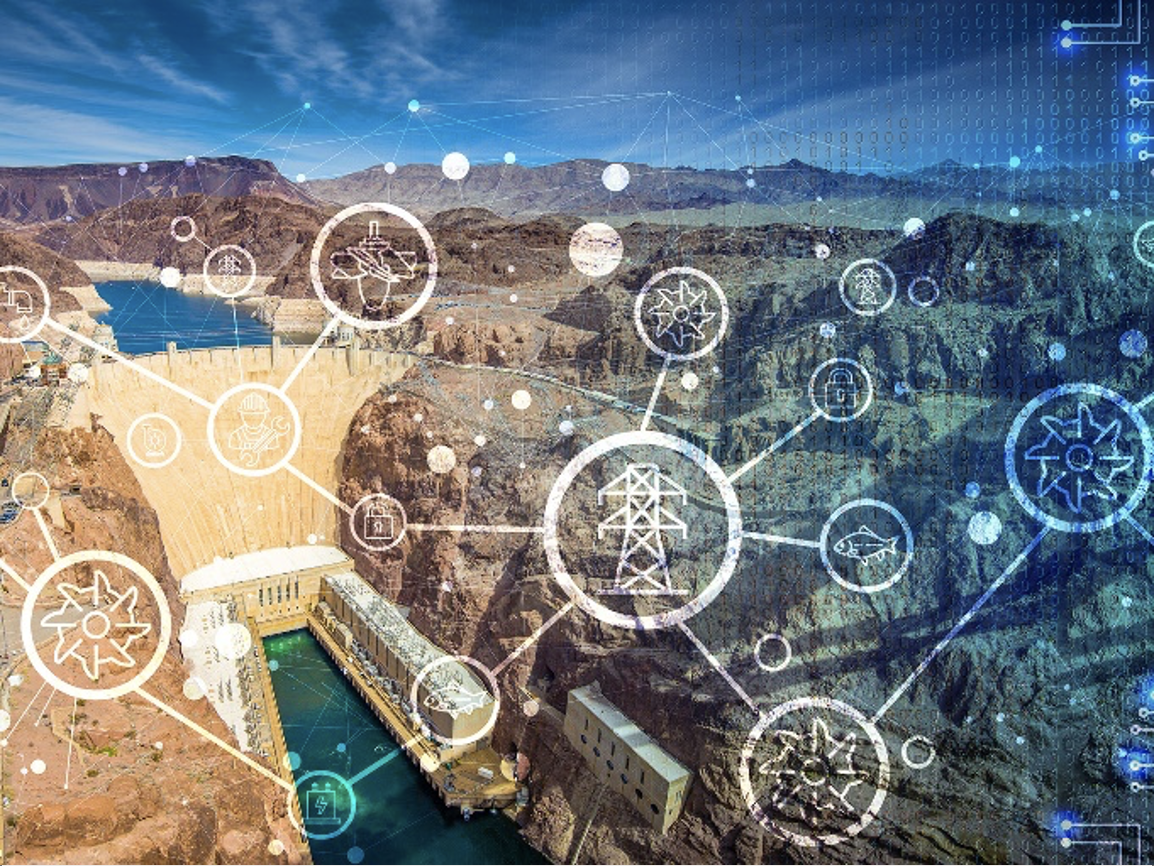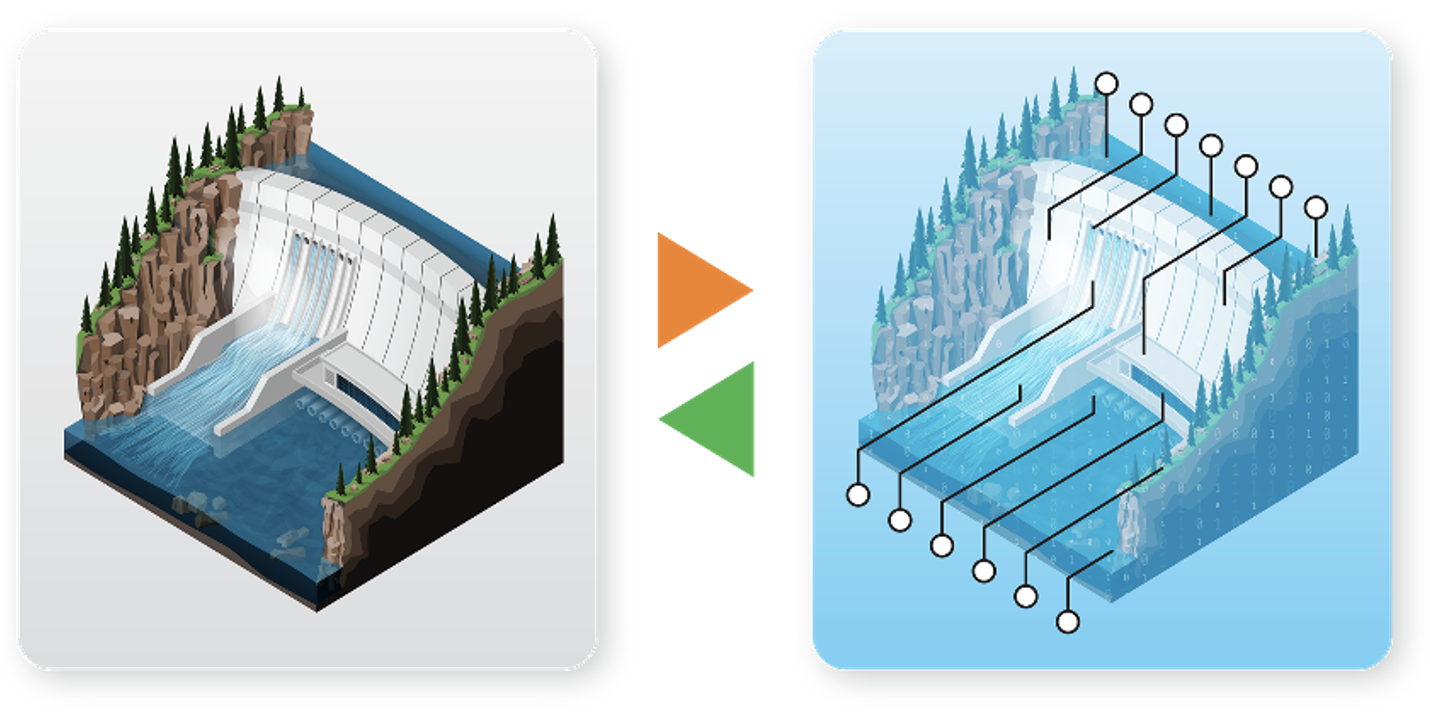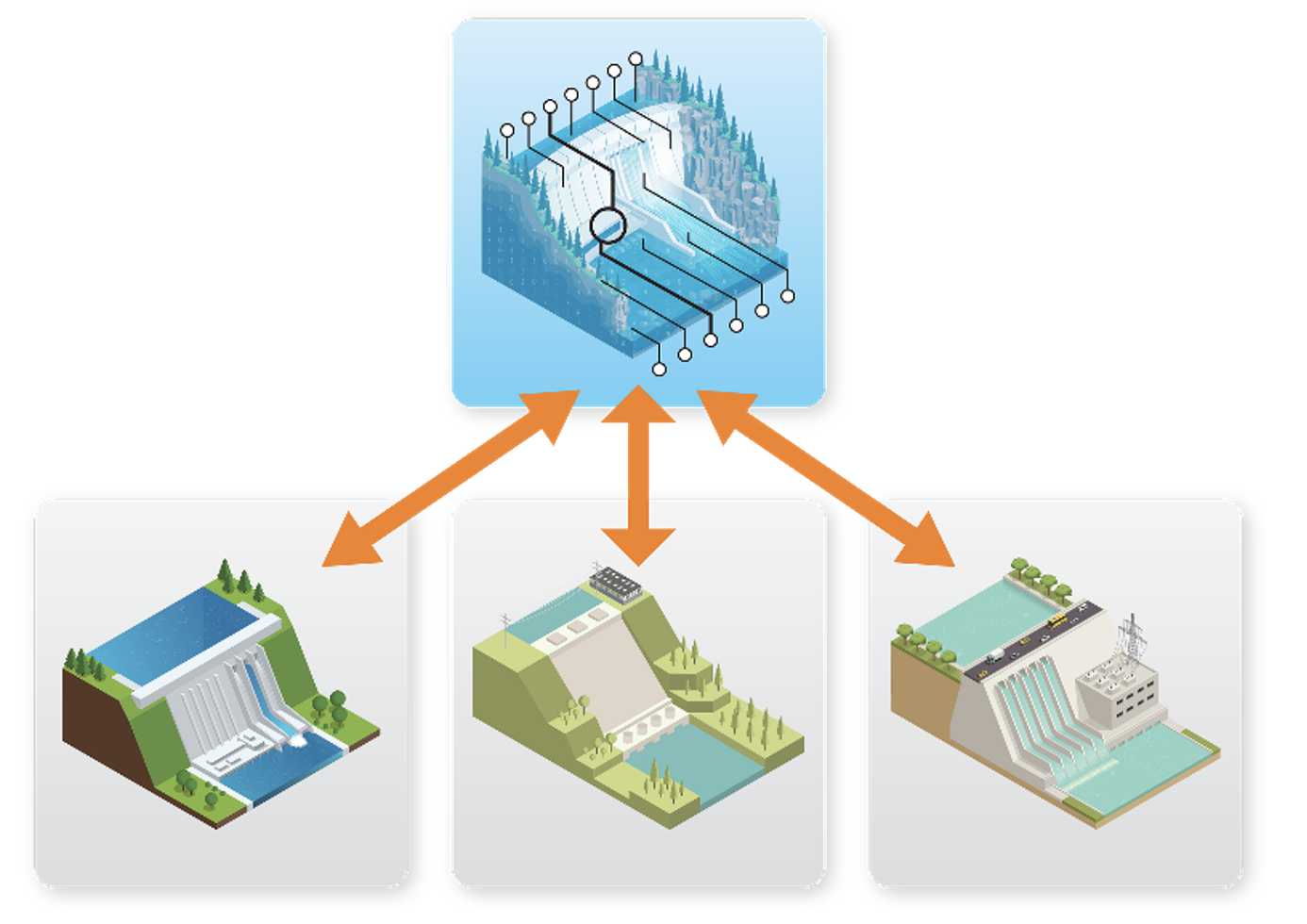Digital Twins for Hydropower Systems
OVERVIEW
RESOURCES
HYDROPOWER UNIT
Alder Dam
NTNU Pilot
Rocky Reach Dam
DIGITAL TWIN
SIMULATION

Modern hydropower is a key part of a cleaner energy future
Hydropower is the nation’s longest-serving renewable energy technology, but it faces challenges in today’s shifting energy landscape. As more variable renewables are integrated with the grid, hydropower’s role has expanded from simply generating energy to helping sustain power system reliability and resiliency. Plus, the U.S. hydropower fleet is aging, with an average machine age of 64 years. Together, these pose complex and demanding operational and planning challenges for hydropower asset managers, owners, and stakeholders.
These challenges will be difficult to overcome without the benefits of the best available and future advancements in sensors, data and control systems, analytics, simulations, optimization, cybersecurity, and computing capabilities. Modernization is needed to sustain and improve the value and reliability of hydropower into the future.
A digital twin can help modernize hydropower
A digital twin (DT) couples a virtual computational model with a real-world physical system—in this case a hydropower facility. Fundamentally, a DT is an evolving digital profile of the historical and current behavior of a physical asset or process that enables optimization of that asset or process. By closely monitoring a real-world hydropower facility and comparing it to a virtual model of the facility, it’s possible to evolve the model and use that information to implement more robust control and optimization in the real world. Using both virtual and real-world data and feedback, a DT can develop the capacity to learn from and reason about its environment.
DT approaches have been embraced by the manufacturing and automotive industrial sectors, but are just beginning to be used by the electricity sector.

A digital twin couples a real-world system—in this case a hydropower facility—with a virtual simulation to support optimization

Digital twins not only finds and fixes problems for a specific hydropower plant, but also proactively identifies similar problems and prescribes fixes well in advance to other hydropower plants
Building a digital twin for hydropower systems
With support from the Department of Energy’s Water Power Technologies Office, Oak Ridge National Laboratory and Pacific Northwest National Laboratory are executing a multi-year project to design, develop, protype, and demonstrate a Digital Twin for Hydropower Systems (DTHS) platform. Launched in 2021, the project will also address the accessibility and cost of DT systems. Developing a more affordable, user-friendly, open platform DT system for hydropower will enable it to be broadly operated by a technical workforce across the hydropower industry.
DT systems for hydropower require both backward and forward system compatibility. To find optimized solutions, the DT platform must integrate data from different legacy systems and devices with new sensors and equipment, using open interoperable protocols and an open system architecture. To accomplish this, we are developing an open platform to provide affordability and broad options for data integration.
We envision the DTHS platform will have certain features and functionalities in terms of: 1) Internet of Things platform capability; 2) data acquisition and integration; 3) configuration that allows user friendly data definitions; and 4) data processing, modeling, and management. The platform will also have an applications layer for predictive analytics, control, optimization, and grid services with an effective user interface. Designed to be open access, the platform will serve as a valuable research and development platform to accelerate the pace of new technology development for the growth and sustainability of hydropower industry, national laboratories, and academia.
The scoping, specification, and roadmap for the platform is an early step in the long-term vision for WPTO-led research that addresses hydropower digitalization challenges. That vision includes future development and widespread adoption of an extensible platform as a best practice and baseline digitalization technology for optimal design, operation, and management of hydropower assets to assure and enhance reliability, performance, and value.